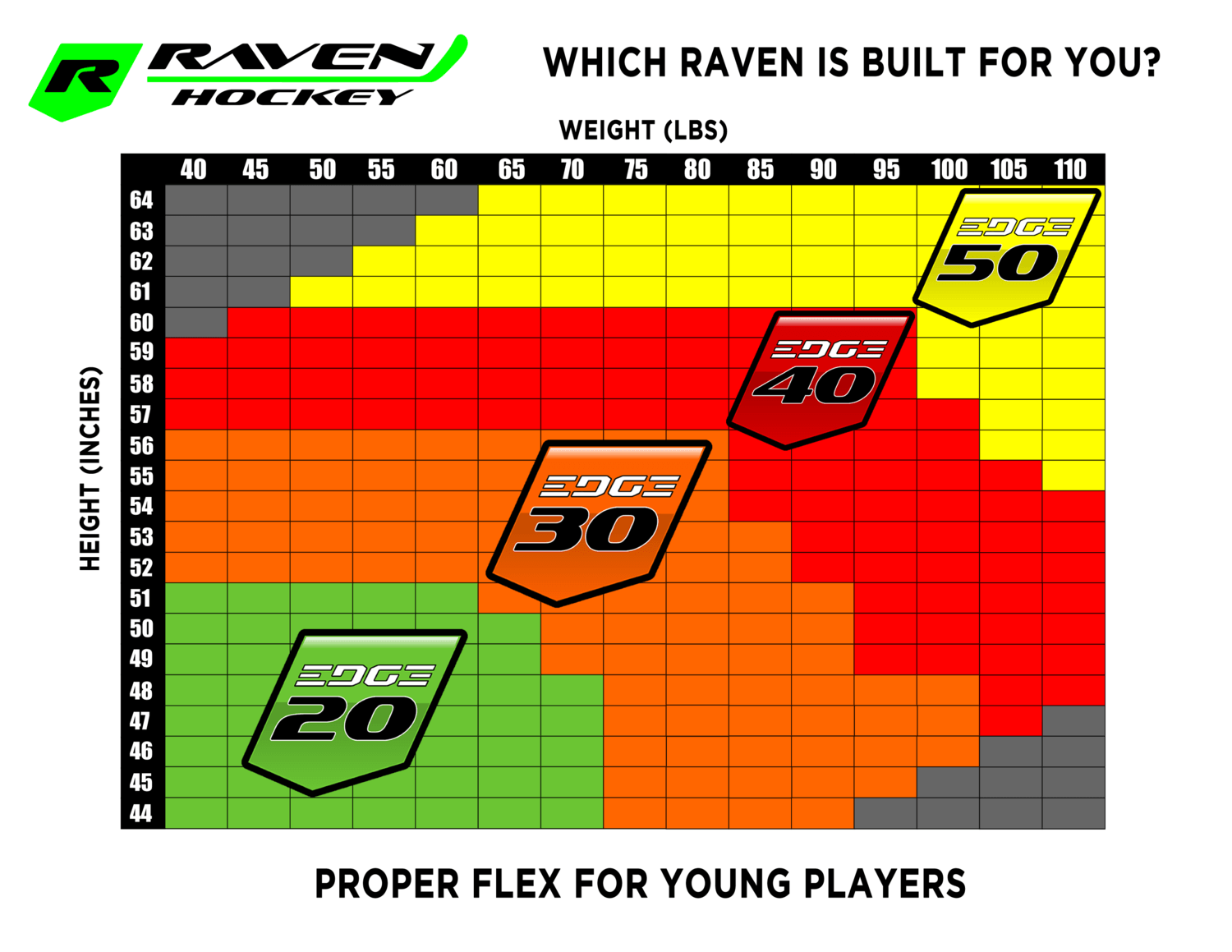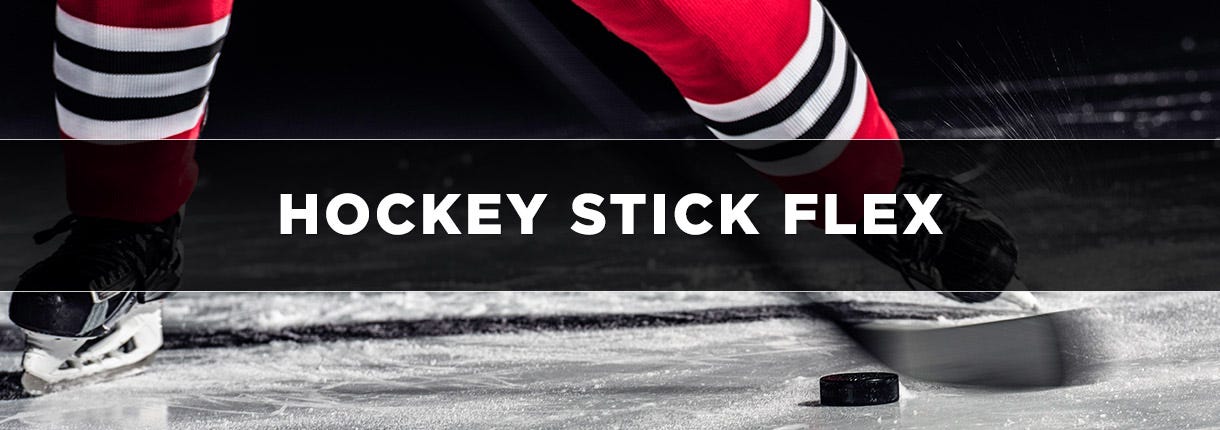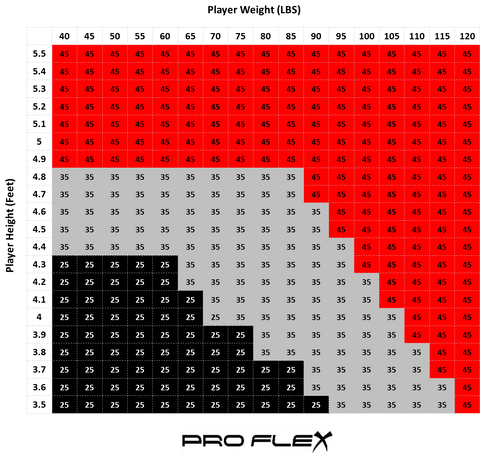Finding the right flex for your hockey stick can be challenging. It can affect your game significantly.
Understanding flex is crucial for improving your shot and overall performance. Flex refers to how much your stick bends when you apply pressure. The right flex can help you shoot harder and more accurately. But how do you choose the correct one?
This guide will help you understand different flex ratings and how to pick the best one for your needs. Whether you’re a beginner or a seasoned player, knowing your ideal flex can make a big difference. Let’s dive into the details and find the perfect flex for your hockey stick.

Credit: www.ravenhockey.com
Choosing The Right Flex
Choosing the right flex for your hockey stick can improve your game. Flex impacts shooting, passing, and puck control. Understanding the right flex for your needs is crucial.
Factors To Consider
Several factors influence the choice of hockey stick flex. Consider your weight, height, and playing style.
- Weight: Heavier players often need stiffer flex.
- Height: Taller players may prefer a stiffer stick.
- Playing Style: Shooters may opt for stiffer flex, while playmakers might choose a softer one.
Use your weight and height to find a starting point. Adjust based on your playing style and personal preference.
Common Flex Ratings
Flex ratings range from 40 to 110. Here’s a quick guide:
| Flex Rating | Player Type |
|---|---|
| 40-50 | Younger players or beginners |
| 50-70 | Lightweight players or those who prefer a softer flex |
| 70-85 | Average weight players with balanced playing style |
| 85-100 | Heavier players or those with a powerful shot |
| 100+ | Professional or very strong players |
These ratings serve as a guideline. Experiment to find what works best for you.
Player Position And Flex
Choosing the right flex for your hockey stick is crucial. It can impact your performance on the ice. The position you play often dictates the best flex for you. Each position has unique needs. This guide will help you understand which flex suits your role.
Forwards Vs Defensemen
Forwards usually prefer a lower flex rating. This allows for quicker shots and better puck handling. A lower flex helps in quick-release shots. It provides more control during fast plays. Typical flex ratings for forwards range from 75 to 85.
Defensemen, on the other hand, often choose a higher flex. This offers more stability and power. It aids in making stronger passes and harder shots from the blue line. Defensemen typically use flex ratings between 85 and 100.
Goalies And Flex
Goalies have unique needs. They rarely take shots. So, the flex is less critical for them. Goalies often use sticks with very low flex. This helps in controlling rebounds and making precise passes. The typical flex for goalies is around 70 or lower.
| Position | Preferred Flex Range |
|---|---|
| Forwards | 75-85 |
| Defensemen | 85-100 |
| Goalies | 70 or lower |
- Forwards: Lower flex for quick shots.
- Defensemen: Higher flex for stability and power.
- Goalies: Very low flex for control.
Flex And Playing Style
Choosing the right hockey stick flex can significantly impact your performance on the ice. Your playing style should dictate the flex you select. Understanding how different flexes cater to various roles will help enhance your game.
Snipers And Playmakers
Snipers and playmakers usually prefer a lower flex. A lower flex allows for quicker shots and more accurate passes. It also provides a good balance between power and control.
- Lower flex (50-70) for quicker release
- Better puck handling
- Improved accuracy
A lower flex stick helps snipers to shoot more accurately. Playmakers benefit from better puck control and precise passes.
Grinders And Enforcers
Grinders and enforcers need a stiffer stick. A higher flex offers durability and power. It withstands physical play and delivers strong hits.
- Higher flex (85-110) for durability
- Increased hitting power
- Enhanced physical play
Grinders use the stiffer flex for powerful checks and battles along the boards. Enforcers rely on the higher flex for delivering strong, impactful shots.

Credit: www.hockeymonkey.com
Testing Your Flex
Choosing the right hockey stick flex is crucial for performance. Testing your flex on the ice ensures that you get the best fit. Let’s dive into the steps to evaluate and adjust your hockey stick flex.
On-ice Evaluation
Start by taking your stick to the ice. This is where you will get the most accurate feel for the flex. Here are some steps to follow:
- Warm-up: Do some basic skating drills to get comfortable.
- Take shots: Shoot pucks at different speeds and angles. Notice how the stick responds.
- Stickhandling: Practice your stickhandling with the puck. See if the stick feels too stiff or too soft.
- Passing: Make and receive passes. Check if the stick gives you good feedback.
Pay attention to how your stick performs during each activity. If it feels right, you might have found your ideal flex.
Adjusting Flex For Comfort
If the stick feels too stiff or too soft, adjustments are needed. Here’s how to make those changes:
- Cutting the Stick: Cutting your stick shorter increases the flex. This can make it stiffer.
- Adding an Extension: Adding length to your stick decreases the flex. This can make it softer.
- Using a Different Flex: Try a different flex rating. If your stick is too stiff, go lower. If too soft, go higher.
Remember, comfort is key. A stick that feels good improves your game. Test different adjustments until you find the perfect fit.
By testing your flex on the ice and adjusting as needed, you’ll find the perfect balance. A well-matched stick flex enhances your performance and enjoyment of the game.
Flex And Stick Performance
Choosing the right flex for your hockey stick can greatly impact your game. Flex affects how the stick bends and performs in different situations. It influences shot accuracy, puck control, and overall feel on the ice. Understanding how flex works will help you make the best choice for your style of play.
Impact On Shot Accuracy
Shot accuracy relies heavily on the flex of your stick. A stick with the right flex will bend correctly during a shot. This bending stores and releases energy, giving you more precise control. If the flex is too stiff or too soft, it can cause your shots to go off-target. Finding the right balance is key for hitting your mark consistently.
Flex And Puck Control
Puck control is another area where flex matters. A stick with the right flex will offer better feedback through your hands. This can help you feel the puck and make quicker, more accurate passes. Sticks that are too stiff may not provide the same level of control. Softer flex sticks can help improve your stickhandling skills, making it easier to maneuver around opponents.

Credit: reboothockey.wordpress.com
Frequently Asked Questions
What Is Hockey Stick Flex?
Hockey stick flex is the stiffness of the stick. It affects shot power.
How Do I Choose The Right Flex?
Choose based on your weight and strength. Heavier players need stiffer sticks.
Is A Higher Flex Number Better?
Not always. Higher flex means stiffer stick. It’s better for stronger players.
Can Flex Affect My Shot Accuracy?
Yes, flex impacts shot accuracy and power. The right flex improves performance.
How Do I Measure Stick Flex?
Press the stick against a surface. Measure how much it bends with applied pressure.
Does Flex Matter For Beginners?
Yes, flex helps beginners control shots and pass accurately. Start with a lower flex.
What Flex Should I Use For Wrist Shots?
Lower flex is better for wrist shots. It gives more whip and speed.
Should I Change Flex For Different Positions?
Yes, forwards may prefer lower flex for quick shots. Defense may prefer higher flex.
Can I Cut My Stick Without Affecting Flex?
Cutting the stick changes the flex. Shorter sticks become stiffer. Adjust flex accordingly.
Conclusion
Choosing the right hockey stick flex improves your game. Remember, your playing style and strength matter. Test different flex options. Find what feels best for you. Consult with experienced players or coaches. They can offer valuable insights. Always consider your comfort and performance on the ice.
A well-chosen flex helps you play better. Enjoy the game more. Happy playing!




